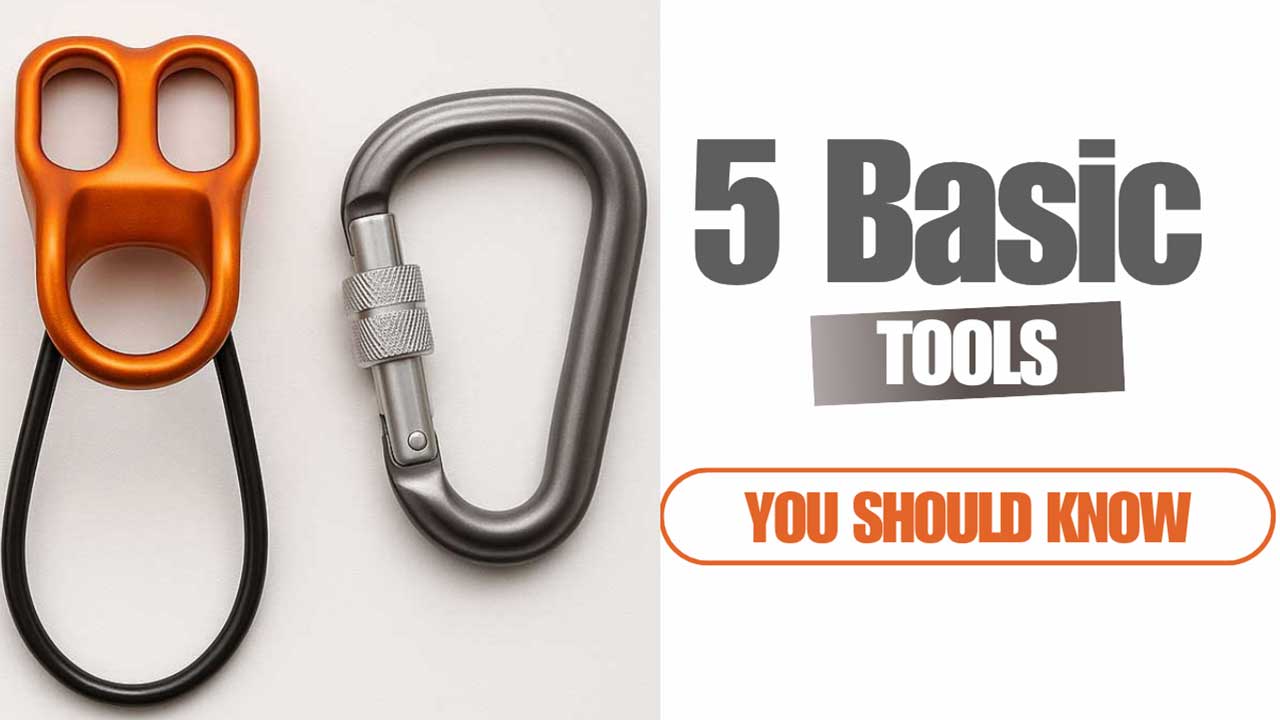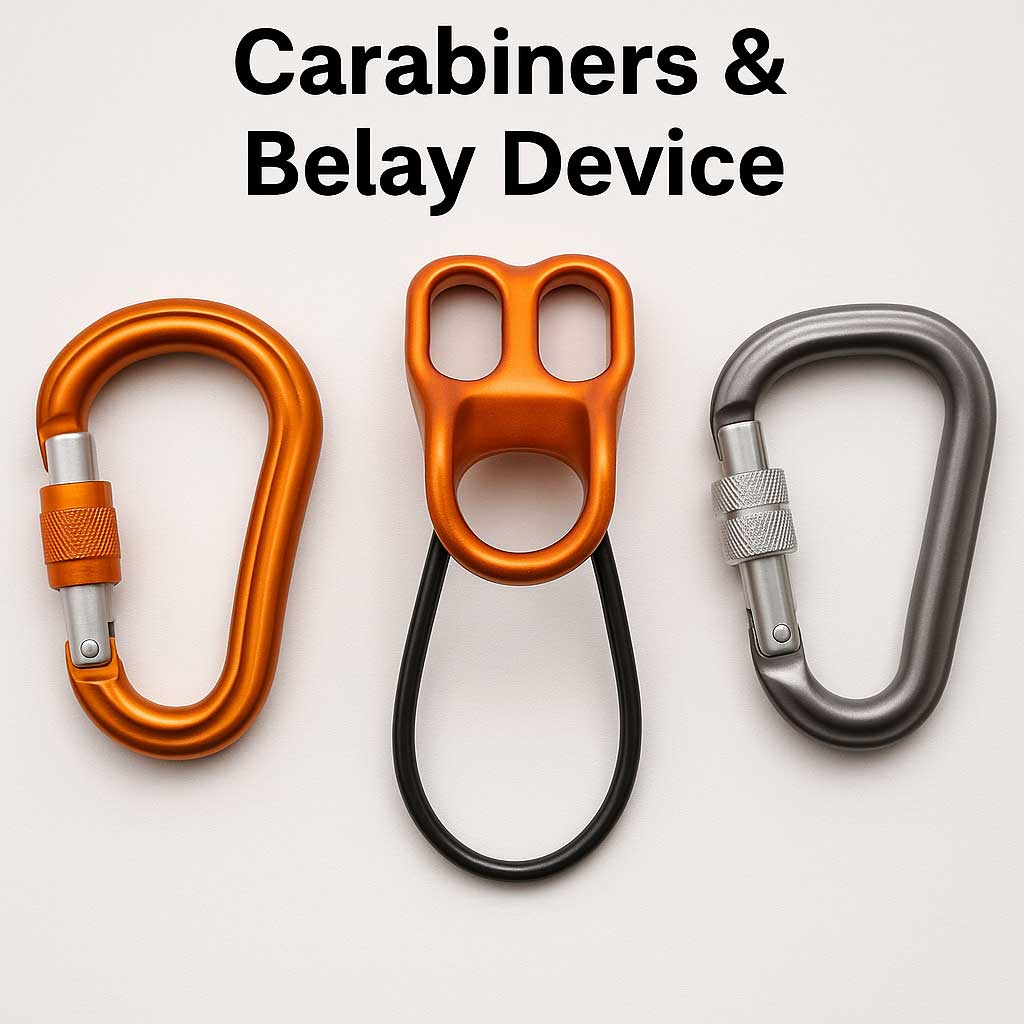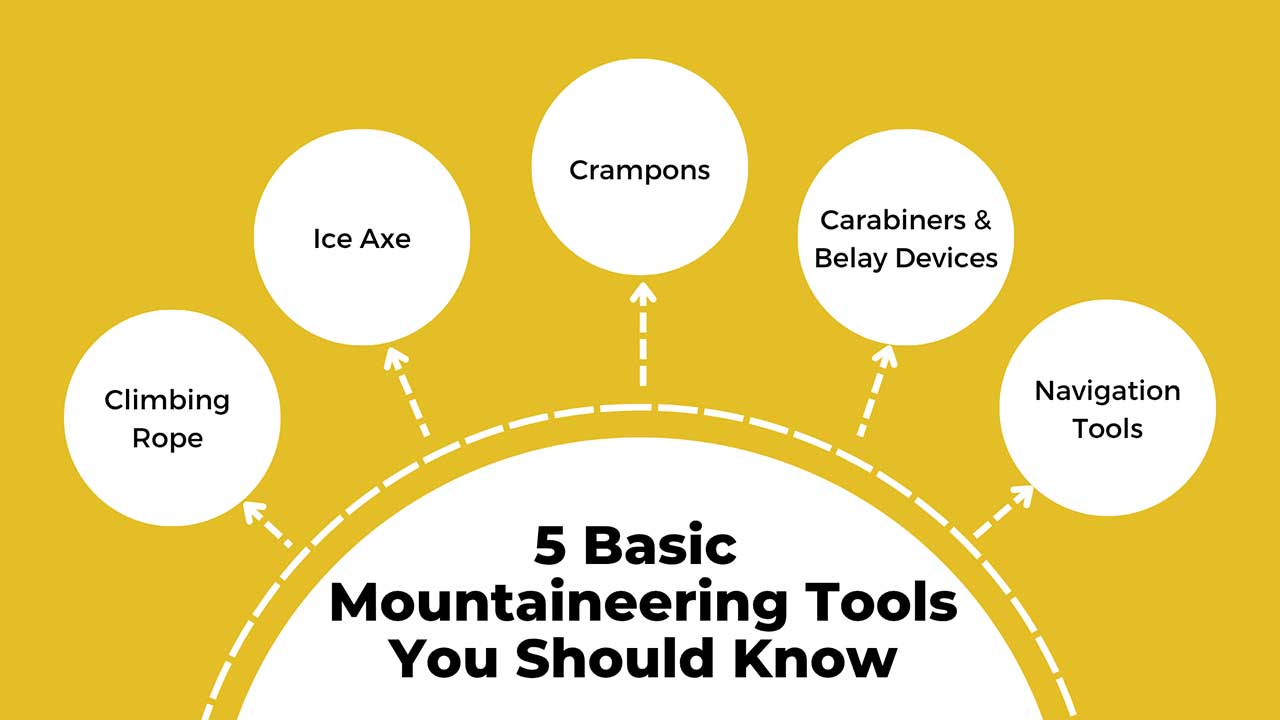5 Basic Tools You Should Know How to Use in the Mountains
Blogs
Essential Mountain Tools Every Beginner Should Master
Whether you’re on a multi-day Himalayan trek or enrolled in a basic mountaineering course, knowing how to use essential mountain tools can make a critical difference in your safety, efficiency, and confidence. While gear has become lighter and more user-friendly, it still requires skill to use it correctly—especially in rugged alpine terrain.
In this blog, we cover 5 basic tools every beginner mountaineer or trekker should know how to use before heading into the high mountains.
1. Climbing Rope
Why it’s essential: Used for belaying, rappelling, crevasse rescue, glacier travel, and protection on steep sections.
Learning to use a rope properly is non-negotiable in mountaineering. It’s your lifeline in technical terrain. As a beginner, you should start by learning how to:
- Coil and carry the rope
- Tie basic knots like figure-8, clove hitch, and overhand
- Use rope for short-roping and glacier travel
Where to learn: Mountaineering Course
2. Ice Axe
Why it’s essential: For balance, self-arrest during slips, and cutting steps in snow or ice.
An ice axe is a multi-functional tool in snowbound terrain. Whether you’re ascending a snowy slope or descending icy trails, knowing how to:
- Hold the axe correctly
- Use it for stability
- Perform a self-arrest after a fall
…can save your life.
Pro Tip: Practice self-arrest on gentle snowy slopes with expert supervision before attempting steeper routes.
Learn more about: Ice Axe
3. Crampons
Why it’s essential: Provide traction on icy, steep terrain where slipping could be fatal.
Crampons are metal spikes that attach to your boots, giving you the grip needed to move over ice. Beginners must learn to:
- Fit crampons securely
- Walk using the French and front-pointing techniques
- Avoid “gaiter bites” by walking with proper spacing
Commonly used on: Climbs, Pin Parvati Pass Trek, and other high passes in the Indian Himalayas.
Learn more about: Crampons
4. Carabiners & Belay Devices

Why it’s essential: Fundamental for rope management, belaying, and building anchors.
Carabiners may seem like simple clips, but they play a critical role in your safety system. Learn to:
- Identify locking vs. non-locking carabiners
- Use them for belaying with devices like ATC or GriGri
- Rig top-rope systems and rappel safely
ADA Pro Tip: Carry at least 2–3 locking carabiners and know how to use them with a harness and rope.
5. Compass & Map (Navigation Tools)
Why it’s essential: Batteries die. Technology fails. Traditional navigation is your backup.
While GPS devices and smartphone apps are great, nothing beats a basic compass and topographic map when navigating unmarked or glacier-covered terrain. Every trekker should know:
- How to orient a map
- Read contour lines and terrain features
- Take and follow bearings
For longer treks like Bara Bhangal Trek, this is an invaluable skill.

Final Thoughts: Tools Only Work if You Know How to Use Them
The mountains are unforgiving to the unprepared. Having the right gear is only half the equation—knowing how to use it properly is what separates safe climbers from risky ones.
At Ascent Descent Adventures, our mountaineering courses are designed to make you confident with each of these tools—through hands-on training, real-world application, and instructor-led feedback.
Ready to level up your skills? Explore our Mountain Training Programs and join us in the Indian Himalayas.
Recommended Read for Gear & Equipment:
- 5 Essential Gear Items Every Beginner Mountaineer Needs
- 5 Budget Gear Recommendations for First-Time Climbers
- 5 Mistakes to Avoid When Buying Mountaineering Gear
- 5 Must-Have Layers for Staying Warm Above 4,000 Meters